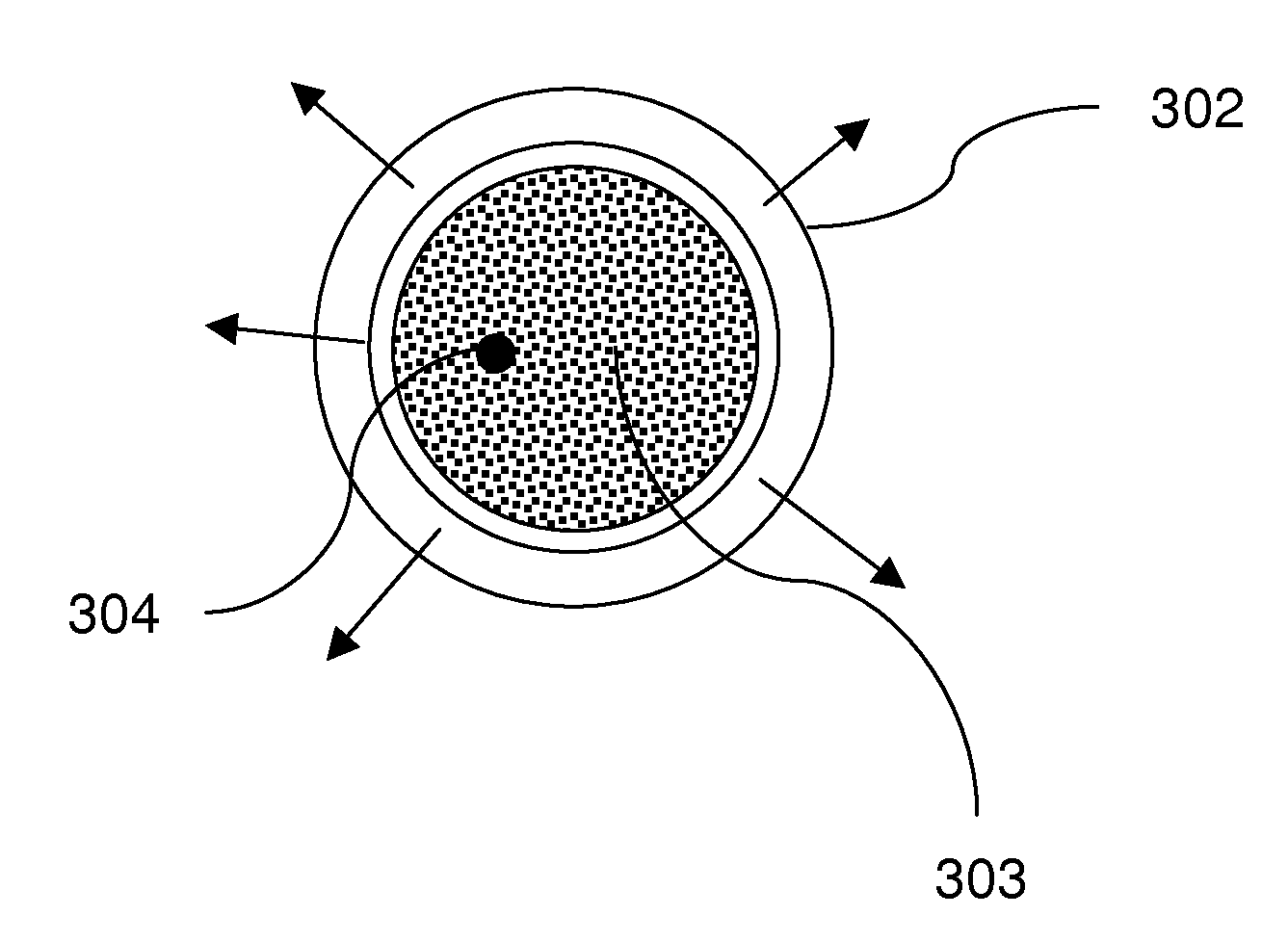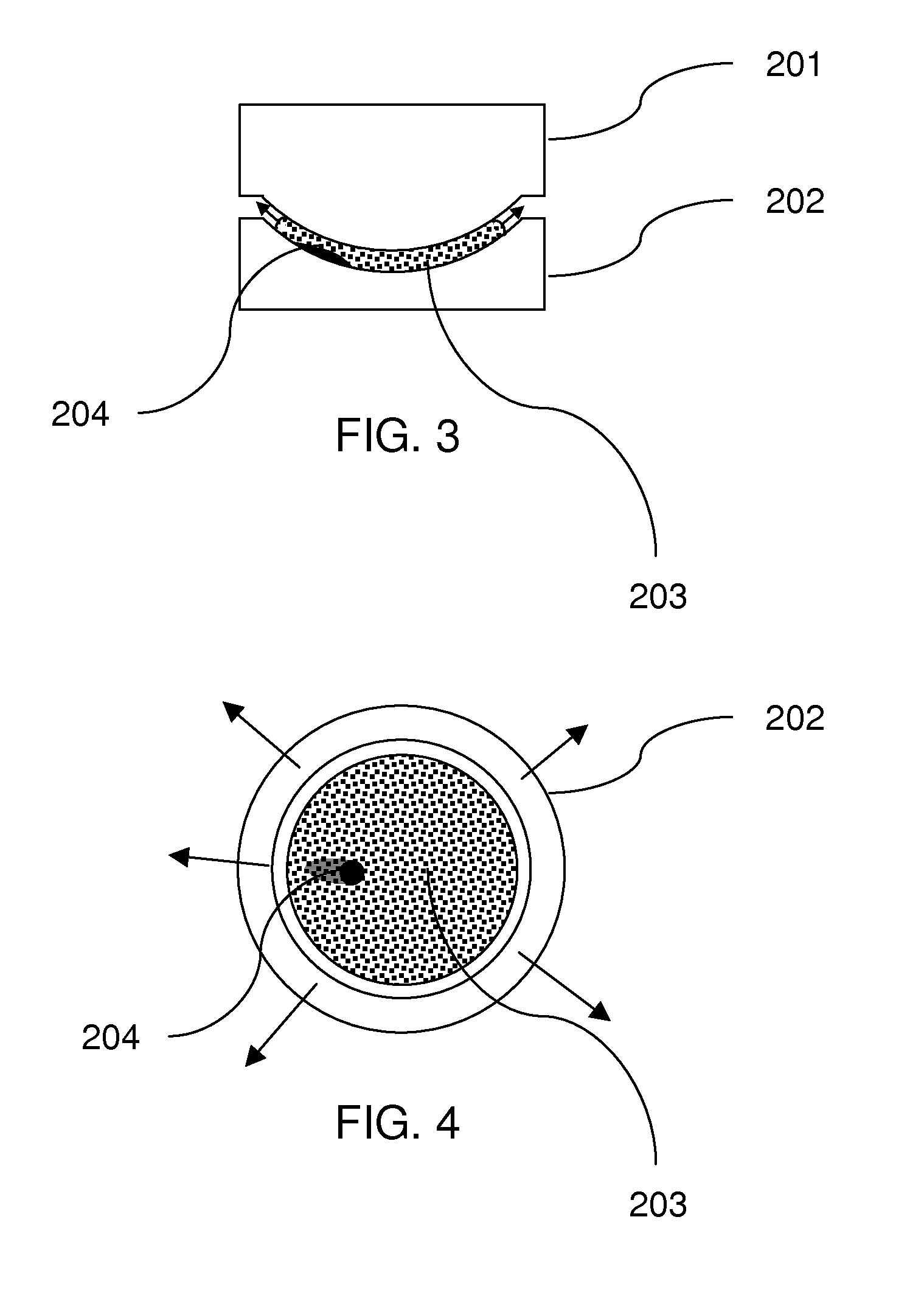Method for making a colored contact lens
a contact lens and color technology, applied in the field of colored contact lens making, can solve the problems of troublesome manufacture and verification of identity, added complexity of process, and ink drop applied through pad transfer printing
- Summary
- Abstract
- Description
- Claims
- Application Information
AI Technical Summary
Benefits of technology
Problems solved by technology
Method used
Image
Examples
examples
[0078]A preferred ink used in the method of the invention is a PVA (Polyvinylalcohol) based ink of the following composition[0079]7% HEMA=2-hydroxyethyl methacrylate[0080]7% Nelfilcon polymer (a PVA based polymer) (prepared according to U.S. Pat. No. 5,583,163 or EP 790258B1)[0081]2% Phthalocyanine green pigment[0082]1.2% Irgacure® 2959, a photoinitiator (commercially available from Ciba AG, Basel, Switzerland)[0083]1% Diethylenglycol[0084]0.5% Surfynol® 465, a surfactant (commercially available from Air Products, US) 81.3% water
[0085]A preferred lens forming material used in the method of the invention is a silicone hydrogel lens forming material of the following composition:[0086]33% CE-PDMS Macromer[0087]17% Tris-acrylamide which is N-[tris(trimethylsiloxy)-silylpropyl]acrylamide[0088]24% N,N-dimethylacrylamide[0089]0.5% L-PEG 2000, which is (N-(Carbonyl-methoxypolyethylenglycol-2000)-1,2-distearoyl-sn-glycero-3-phospoethanolamine, sodium salt)[0090]1.0% Darocur® 1173, a photoini...
PUM
 Login to View More
Login to View More Abstract
Description
Claims
Application Information
 Login to View More
Login to View More - R&D
- Intellectual Property
- Life Sciences
- Materials
- Tech Scout
- Unparalleled Data Quality
- Higher Quality Content
- 60% Fewer Hallucinations
Browse by: Latest US Patents, China's latest patents, Technical Efficacy Thesaurus, Application Domain, Technology Topic, Popular Technical Reports.
© 2025 PatSnap. All rights reserved.Legal|Privacy policy|Modern Slavery Act Transparency Statement|Sitemap|About US| Contact US: help@patsnap.com



